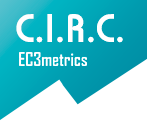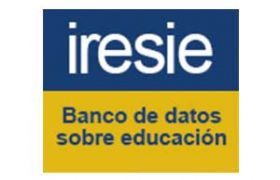Incremento de las habilidades socio-emocionales de alumnado con TEA tras una intervención apoyada en un Entorno Gamificado Aumentado
Resumen
Esta investigación examina el impacto de una intervención que utiliza un Entorno Gamificado Aumentado (EGA) para estimular las habilidades socio-emocionales de una muestra de 54 sujetos con Trastorno del Espectro Autista (TEA) de edades comprendidas entre 3 y 17 años. La metodología utilizada es cuantitativa, de carácter exploratorio y analítico. Se evalúan las habilidades socio-emocionales antes y después de la intervención (pre-postest) con el instrumento DiagnosticApp, apoyado en una app lúdica. Concretamente, se analiza su capacidad para identificar emociones y estados emocionales primarios y secundarios, y la relación causa-efecto ligada a un contexto. Los resultados muestran que las habilidades socio-emocionales se incrementan tras finalizar la intervención, independientemente del género, edad, grado de TEA, comorbilidad y tipo de lenguaje. En general, el mayor aumento se observa en la identificación de emociones tanto primarias como secundarias a partir del reconocimiento de expresiones faciales. Además, como era previsible, el alumnado con menor grado de TEA, de mayor edad y con un lenguaje más funcional presenta mayores valores en sus habilidades socio-emocionales. En conclusión, la motivación extrínseca asociada a la hibridación de las mecánicas, dinámicas y estéticas del juego, junto con los recursos de realidad aumentada que conforman el EGA constituyen elementos claves que favorecen el incremento de las habilidades socio-emocionales de este alumnado.
Palabras clave
Referencias
Allen, M.L., Hartley, C. & Cain, K. (2016). iPads and the use of “apps” by children with autism spectrum disorder: do they promote learning? Frontiers in Psychology, 7(1305), 1-7. https://doi.org/10.3389/fpsyg.2016.01305
American Psychiatric Association (2013). Diagnostic and Statistical Manual of Mental Disorders (DSM-5). American Psychiatric Association.
Anderson, D.K., Liang, J.W., & Lord, C. (2014). Predicting young adult outcome among more and less cognitively able individuals with autism spectrum disorders. Journal of child psychology and psychiatry, 55(5), 485-494. https://doi.org/10.1111/jcpp.12178
Andrés-Roqueta, C., Benedito, I., & Soria-Izquierdo, E. (2017). Uso de aplicaciones móviles para la evaluación de la comprensión emocional en niños y niñas con dificultades del desarrollo [Use of mobile applications for the evaluation of emotional understanding in children with developmental difficulties]. Revista de Psicología y Educación, 12(1), 7-18. https://hdl.handle.net/11162/220633
Andrés-Roqueta, C., Bresó, E., & Ramos, F. (2015). Emotional competence assessment in children with ASD by using a mobile app. In L. Gómez-Chova, A. López-Martínez, I. Candel (Eds.), 7th International Conference on Education and New Learning Technologies, (pp. 6180-6187). Universidad de Barcelona. https://library.iated.org/view/ANDRES2015EMO
Arzone, C., Mottan, K., & Saad, K.M. (2020). The Relationship between Gamification and Emotional Intelligence among Children with Autism Spectrum Disorder. In International Conference on Special Education In South East Asia Region 10th Series 2020 (pp. 424-433). Redwhite Press. https://series.gci.or.id/article/320/15/icsar-2020-2020
Aspiranti, K., Larwin, K., Schade, L, & Schade, B. (2018). iPads/tablets and students with autism: a meta-analysis of academic effects. Assistive Technology: the Official Journal of RESNA, 32(1), 23-30. https://doi.org/10.1080/10400435.2018.1463575
Baixaulli, I., Roselló, B., Berenguer, C., Colomer, C. & Grau, M. (2017). Intervenciones para promover la comunicación social en niños con trastorno del espectro autista [Interventions to promote social communication in children with autism spectrum disorder]. Revista de Neurología, 64, 39-44. https://doi.org/10.33588/rn.64S01.2017013
Balderaz, L. (2020). Social skills interventions for adults with ASD: a review of the literature. Journal of Psychosocial Rehabilitation and Mental Health, 7(1), 45-54. https://doi.org/10.1007/s40737-020-00158-9
Ben-Itzchak, E., Abutbul, S., Bela, H., Shai, T., & Zachor, D.A. (2016). Understanding one’s own emotions in cognitively-able preadolescents with autism spectrum disorder. Journal of Autism and Developmental Disorders, 46, 2363-2371. https://doi.org/10.1007/s10803-016-2769-6
Berkovits, L., Eisenhower, A., & Blacher, J. (2017). Emotion regulation in young children with autism spectrum disorders. Journal of autism and developmental disorders, 47, 68-79. https://doi.org/10.1007/s10803-016-2922-2
Bruni, T.P. (2014). Test review: Social responsiveness scale–Second edition (SRS-2). Journal of Psychoeducational Assessment, 32(4), 365-369. https://doi.org/10.1177/0734282913517525
Camargo, M.C., Barros, R.M., Brancher, J.D., Barros, V.T., & Santana, M. (2019). Designing Gamified Interventions for Autism Spectrum Disorder: A Systematic Review. In Joint International Conference on Entertainment Computing and Serious Games (pp. 341-352). Springer. https://doi.org/10.1007/978-3-030-34644-7_28
Carrington, S., Saggers, B., Webster, A., Harper-Hill, K., & Nickerson, J. (2020). What Universal Design for Learning principles, guidelines, and checkpoints are evident in educators’ descriptions of their practice when supporting students on the autism spectrum?. International Journal of Educational Research, 102, 101583. https://doi.org/10.1016/j.ijer.2020.101583
Dantas, A.C., & Nascimento, M.Z. (2022). Face emotions: improving emotional skills in individuals with autism. Multimedia Tools and Applications, 81(18), 25947-25969. https://doi.org/10.1007/s11042-022-12810-6
AUTORES (2021). Entornos gamificados aumentados para Educación Primaria: claves para su diseño. En J.M., Romero, M., Ramos, C. Rodríguez, & J.M., Sola (coords.). Escenarios educativos investigadores: hacia una educación sostenible, (pp. 1233-1243). Madrid: Dykinson. ISBN: 9788413773018.
Derks, S., Willemen, A.M., & Sterkenburg, P.S. (2022). Improving adaptive and cognitive skills of children with an intellectual disability and/or autism spectrum disorder: Meta-analysis of randomised controlled trials on the effects of serious games. International Journal of Child-Computer Interaction, 100488. https://doi.org/10.1016/j.ijcci.2022.100488
Durán, S. (2021). Tecnologías para la enseñanza y el aprendizaje del alumnado con Trastorno del Espectro Autista: una revisión sistemática. Innoeduca. International Journal of Technology and Educational Innovation, 7(1), 107-121. https://doi.org/10.24310/innoeduca.2021.v7i1.9771
Dziobek, I., Fleck, S., Kalbe, E., Rogers, K., Hassenstab, J., Brand, M., Kessler, J., Woike, J., Wolf, O., & Convit, A. (2006). Introducing MASC: a movie for the assessment of social cognition. Journal of autism and developmental disorders, 36, 623-636. https://doi.org/10.1007/s10803-006-0107-0
Floyd, R. G., Shands, E. I., Alfonso, V. C., Phillips, J. F., Autry, B. K., Mosteller, J. A. et al. (2015). A systematic review and psychometric evaluation of adaptive behavior scales and recommendations for practice. Journal of Applied School Psychology, 31(1), 83– 113. https://doi.org/10.1080/15377903.2014.979384
Fridenson-Hayo, S., Berggren, S., Lassalle, A., Tal, S., Pigat, D., Bölte, S., Baron, S., & Golan, O. (2016). Basic and complex emotion recognition in children with autism: cross-cultural findings. Molecular autism, 7(1), 1-11. https://doi.org/10.1186/s13229-016-0113-9
García-Arnanz, L., Herráez, M., Olivares, E., Selma, M.C., & Andrés-Roqueta, C. (2018). Evaluación de la competencia emocional en niñas/os con trastorno del espectro autista a través de una APP novedosa [Evaluation of emotional competence in children with autism spectrum disorder through a novel APP]. Ágora de Salut, 5, 217-226. http://dx.doi.org/10.6035/AgoraSalut.2018.5.24
AUTORES (2022). Selección de app como herramientas de diagnóstico contextual de la competencia comunicativa en alumnado con TEA [App selection as contextual diagnostic tools of communicative competence in students with ASD]. Revista de Educación Inclusiva, 15(2), 206-219.
López-Bouzas, N., & Del Moral, M.E. (2023). A gamified environment supported by augmented reality for improving communicative competencies in students with ASD: design and validation. IJERI: International Journal of Educational Research and Innovation, 19, 80–93. https://doi.org/10.46661/ijeri.6820
Mazefsky, C.A., Pelphrey, K.A., & Dahl, R.E. (2012). The need for a broader approach to emotion regulation research in autism. Child development perspectives, 6(1), 92-97. https://doi.org/10.1111/j.1750-8606.2011.00229.x
McConachie, H., Parr, J. R., Glod, M., Hanratty, J., Livingstone, N., Oono, I. P., ... & Williams, K. (2015). Systematic review of tools to measure outcomes for young children with autism spectrum disorder. Health Technology Assessment (Winchester, England), 19(41), 1-538. https://doi.org/10.3310/hta19410
Moon, S. J., Hwang, J. S., Shin, A. L., Kim, J. Y., Bae, S. M., Sheehy-Knight, J., & Kim, J. W. (2019). Accuracy of the Childhood Autism Rating Scale: A systematic review and meta-analysis. Developmental medicine & child neurology, 61(9), 1030–1038. http://doi.org/10.1111/dmcn.14246
Mota, J.S., Canedo, E.D., Torres, K.S., & Leão, H.A.T. (2020). AssociAR: Gamified Process for the Teaching of Children with Autism Through the Association of Images and Words. In 2020 IEEE Frontiers in Education Conference (FIE) (pp. 1-8). IEEE. http://doi.org/10.1109/FIE44824.2020.9274271
Müller, N., Baumeister, S., Dziobek, I., Banaschewski, T., & Poustka, L. (2016). Validation of the movie for the assessment of social cognition in adolescents with ASD: Fixation duration and pupil dilation as predictors of performance. Journal of autism and developmental disorders, 46, 2831-2844. https://doi.org/10.1007/s10803-016-2828-z
Nabie, E.M., & Gharebaghlou, M.A. (2022). Applying Gamification to Urban Spaces to Improve Autistic Children’s Presence Tendency. Manzar, 14(58), 46-57. http://doi.org/10.22034/MANZAR.2021.294659.2142
Ntalindwa, T., Nduwingoma, M., Karangwa, E., Soron, T.R., Uworwabayeho, A., & Uwineza, A. (2021). Development of a Mobile App to Improve Numeracy Skills of Children With Autism Spectrum Disorder: Participatory Design and Usability Study. JMIR pediatrics and parenting, 4(3), e21471. https://arxiv.org/abs/1801.03529
Papoutsi, C., Drigas, A. & Skianis, C. (2018). Mobile Applications to Improve Emotional Intelligence in Autism–A Review. International Journal of Interactive Mobile Technologies, 12(6), 47-61. https://doi.org/10.3991/ijim.v12i6.9073
Phung, J.N., & Goldberg, W.A. (2021). Mixed martial arts training improves social skills and lessens problem behaviors in boys with Autism Spectrum Disorder. Research in Autism Spectrum Disorders, 83, 101758. https://doi.org/10.1016/j.rasd.2021.101758
Pires, G., Cruz, A., Jesus, D., Yasemin, M., Nunes, U.J., Sousa, T., & Castelo-Branco, M. (2022). A new error-monitoring brain–computer interface based on reinforcement learning for people with autism spectrum disorders. Journal of Neural Engineering, 19(6), 066032. http://doi.org/10.1088/1741-2552/aca798
Randall, M., Egberts, K.J., Samtani, A., Scholten, R.J., Hooft, L., Livingstone, N., Sterling-Levis, K., Woolfenden, S., & Williams, K. (2018). Diagnostic tests for autism spectrum disorder (ASD) in preschool children. Cochrane Database of Systematic Reviews, 24(7), CD009044. http://doi.org/10.1002/14651858.CD009044.pub2
Schopler, E., Reichler, R.J., DeVellis, R.F., & Daly, K. (1980). Toward objective classification of childhood autism: Childhood autism rating scale (CARS). Journal of Autism and Developmental Disorders, 10(1), 91–103. https://doi.org/10.1007/BF02408436
Vatandoost, L., & Hasanzadeh, R. (2020). Investigation the emotion recognition (Primary and Secondary Emotions) and cognitive impairments and their impact on movement skills among children with autism spectrum disorder. Journal of School Psychology, 9(3), 288-306. http://doi.org/10.22098/JSP.2020.1077
Wang, C., Chen, G., Yang, Z., & Song, Q. (2022). Development of a Gamified Intervention for Children with Autism to Enhance Emotional Understanding Abilities. In Proceedings of the 6th International Conference on Digital Technology in Education (pp. 47-51). https://doi.org/10.1145/3568739.3568749
Enlaces refback
- No hay ningún enlace refback.
Indexación:
Factor de impacto JCI: 0,81. categoría Q4 |  |  |
 |  |  |
 |  |  |
|  |  |
 |  |
|
-
| ISSN: 1889-4208 / e-ISSN: 1989-4643 | |
 Este trabajo se autoriza con una licencia Creative Commons Asignación 4.0 Internacional.
Este trabajo se autoriza con una licencia Creative Commons Asignación 4.0 Internacional.


